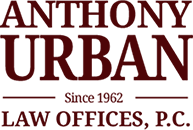Car accidents can happen to anyone, anywhere, and at any time. When they do, it's essential to understand the legal framework that governs these incidents, especially in a state like Pennsylvania. One crucial concept that can significantly impact the outcome of a car accident case in Pennsylvania is comparative negligence. This legal principle plays a pivotal role in determining liability and, consequently, the compensation individuals can receive after an accident. Comparative negligence may also be called contributory negligence. In this blog, we'll delve into the intricacies of comparative negligence in Pennsylvania car accidents and discuss why hiring an attorney from the Law Offices of Anthony Urban in Northumberland County, Pennsylvania, is crucial to navigate these complexities successfully.
What is Comparative Negligence?
Comparative negligence is a legal doctrine used in personal injury cases, including car accidents. It's designed to allocate fault and determine liability when multiple parties are involved in an accident. In Pennsylvania, the comparative negligence system operates under the Modified Comparative Fault Rule, specifically the 51% Bar Rule.
Under this rule, an accident victim can still recover damages even if they share some degree of fault for the accident, as long as their share of fault does not exceed 50%. However, if the victim's degree of fault exceeds 51%, they are barred from recovering any compensation. If their share of fault is less than 51%, their compensation will be reduced in proportion to their degree of responsibility for the accident. After a thorough investigation, Law Offices of Anthony Urban will advocate for no negligence or less comparative negligence for our clients.
How Comparative Negligence Determines Liability
A passenger who has not interfered with the driver should never be found to be at fault; only drivers are typically found to be at fault. There are other scenarios in which a non-driver could be liable to have contributed to a car accident as well, such as a property owner with overgrown vegetation obscuring visibility at an intersection, a municipality or transportation department for failing to maintain signs or signals, or even a bar that served too much alcohol to a patron who later operates a vehicle drunk.
To understand how comparative negligence affects liability, let's consider an example:
Imagine Driver A is involved in a car accident with Driver B. Driver A sustains injuries and seeks compensation. After a thorough investigation, it's determined that Driver A was 20% at fault for the accident, while Driver B was 80% at fault.
In this scenario:
- Driver A can still pursue compensation because their share of fault (20%) is less than 50%.
- However, the compensation they receive will be reduced by their percentage of fault, so if the total damages were $100,000, Driver A would receive $80,000 (80% of $100,000), or $100,00 less their own 20% fault.
In another scenario, Driver A runs a red light trying to go through an intersection and collides with Driver B, who was speeding and making a left turn without an assured clear distance ahead, which causes the vehicles to crash into Driver C’s vehicle. Driver A and Driver B have different insurance coverage and each share a certain percentage of comparative negligence. Driver C may secure compensation from Driver A or Driver B, or both A and B, depending upon each’s degree of fault.
Why You Need an Attorney
Navigating the complex world of comparative negligence in Pennsylvania car accident cases requires legal expertise. Here are some reasons why hiring an attorney from the Law Offices of Anthony Urban is crucial after an accident:
- Understanding Comparative Negligence: An experienced attorney can help you understand how comparative negligence may apply to your case. They will assess the evidence, interview witnesses, investigate insurance coverage available, and work to build a strong argument to minimize your share of fault and maximize your recovery.
- Maximizing Compensation: Attorneys are skilled negotiators who can fight for your rights to ensure you receive the maximum compensation possible. They will consider all the factors, including comparative negligence and available insurances, to calculate a fair settlement.
- Proving Liability: To recover damages, you must prove the other party's negligence. Attorneys have the knowledge and resources to gather evidence, consult with experts if needed, and present a compelling case to establish the other party's liability.
- Navigating Insurance Companies: Dealing with insurance companies can be challenging, as they may attempt to minimize your claim. An attorney will handle all communications with the insurance company, protecting your interests and ensuring you receive fair treatment.
Understanding comparative negligence is crucial when pursuing a car accident claim in Pennsylvania. The Law Offices of Anthony Urban, located in Northumberland County, Pennsylvania, have the expertise to help you navigate the complexities of this legal concept and ensure you receive the compensation you deserve. Don't let comparative negligence prevent you from seeking justice after an accident. Contact us today to schedule a consultation and let our experienced attorneys fight for your rights.

